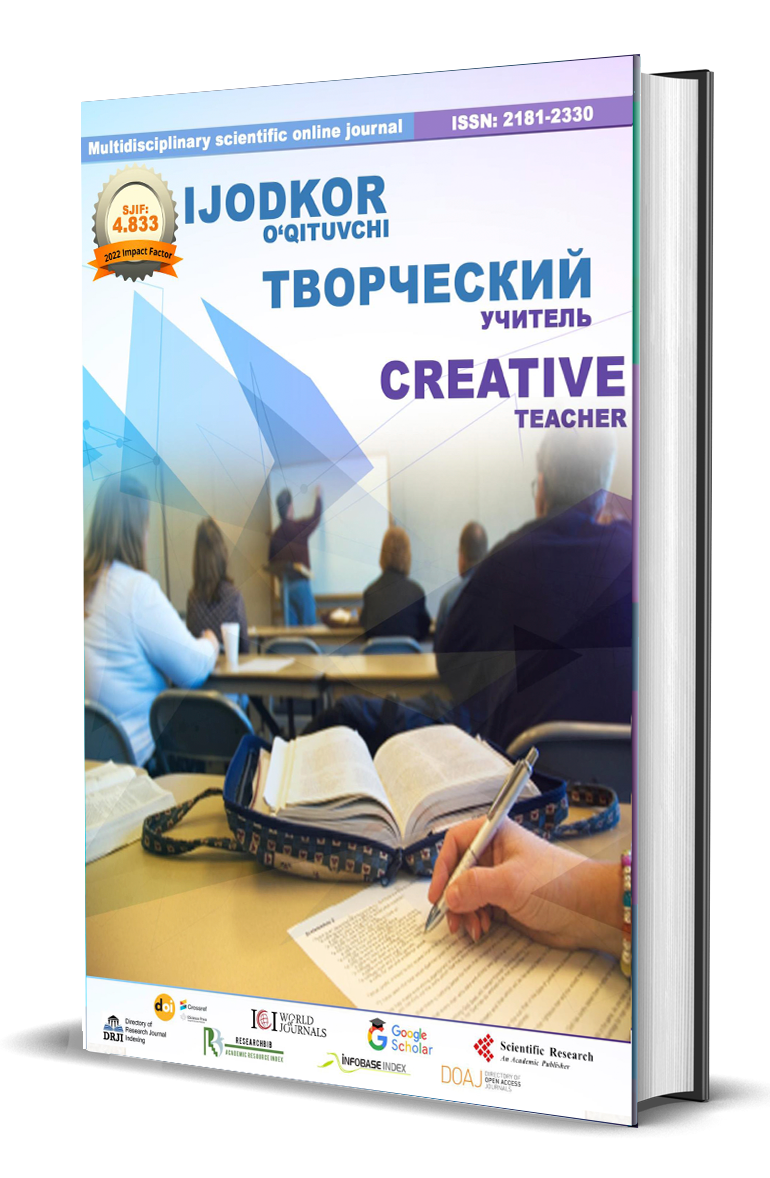TEACHING APPROACHES AND METHODS IN ENGLISH GRAMMAR
Keywords:
The long search for the most effective way to teach English has produced a wide range of approaches or methods.Abstract
This thesis offers a thorough analysis of grammar instruction in English language schools, contrasting the more modern communicative approach with the more conventional structural approaches. The grammar translation method, the direct method, the audio-lingual method, and the silent way are among the conventional techniques examined. On the other hand, the communicative approach prioritizes interaction and communication over rigorous adherence to grammar rules. Notwithstanding the possible advantages of the communicative approach, the thesis also addresses some of its drawbacks and restrictions. In conclusion, the thesis discusses the current status of teaching English grammar, pointing out the clear drawbacks of excluding grammar instruction and the need to restore grammar's proper place in classroom instruction and language communication.
References
[1]Prabhu, N. (1987) Second Language Pedagogy. Oxford University Press, Oxford.
[2]Krashen, S. (1985) The Input Hypothesis: Issues and Implications. Longman, London.
[3]Harmer, J. (1983) The Practice of English Language Teaching. Longman, London.
[4]Batstone, R. (1994) Product and Process: Grammar in the Second Language Classroom. In: Bygate, M., Tonkyn, A. and Williams, E., Eds., Grammar and the Language Teacher, Prentice Hall, Hemel Hempstead, 224-236.
[5]Batstone, R. (1994) Grammar. Oxford University Press, Oxford.
[6]Peng, Y.H. (2017) A Survey of Grammar Instruction from Scholastic Perspective. English Language Teaching, 10, 76-80. https://doi.org/10.5539/elt.v10n5p76
[7]Ellis, R. (1992) Second Language Acquisition and Language Pedagogy. Multilingual Matters, Bath.
[8]Alexander, L.G. (1988) Longman English Grammar. Longman, Harlow.
[9]Alexander, L.G. (2000) We Learn Grammar in Order to Forget It, a Speech Made in Beijing Foreign Studies University.
[10]Widdowson, H.G. (1990) Aspects of language Teaching. Oxford University Press, Oxford.
[11]He, G.Y. (2002) The Position of Grammar in College English Teaching. Teaching English in China, 25, 52-54.
[12]Swain, M. (1985) Communicative Competence: Some Roles of Comprehensible Input and Comprehensible Output in Its Development. In: Gass, S. and Madden, C., Eds., Input in Second Language Acquisition, Newbury House, Boston, 235-253.
[13]Lightbown, P. and Spada, N. (1993) How Language Are Learned. Oxford University Press, Oxford.
[14]Long, M. (1996) The Role of the Linguistic Environment in Second Language Acquisition. In: Ritchie, W.C. and Bhatia, T.K., Eds., Handbook of Language Acquisition, Vol. 2. Second Language Acquisition, Academic Press, New York, 413-468. https://doi.org/10.1016/B978-012589042-7/50015-3
[15]Schmidt, R. (1992) Psychological Mechanisms Underlying Second Language Fluency. Studies in Second Language Acquisition, 14, 357-385. https://doi.org/10.1017/S0272263100011189
[16]Swain, M. (1993) The Output Hypothesis: Just Speaking and Writing Aren’t Enough. Canadian Modern Language Review, 50, 158-164. https://doi.org/10.3138/cmlr.50.1.158
[17]Schmidt, R. and Frota, S. (1986) Developing Basic Conversational Ability in a Second Language: A Case Study of an Adult Learner of Portuguese. In: Day, R., Ed., Input in Second Language Acquisition, Newbury House, Boston, 237-326.
[18]Williams, J. (1997) Effectiveness of Learner and Teacher-Initiated Focus on Form. In: Second Language Research Forum, Michigan State University, East Lansing, 128-156.
[19]Doughty, C. and Williams, J. (1998) Focus on Form in Classroom Second Language Acquisition. Cambridge University Press, Cambridge.
[20]Thornbury, S. (1997) Grammar, Power and Bottled Water. IATEFL Newsletter, 140, 19-20.




